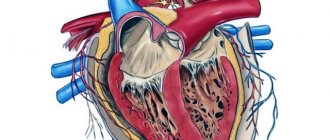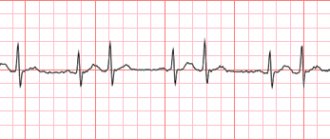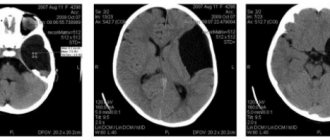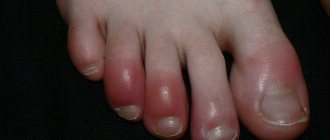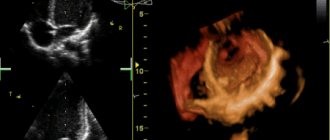Many patients, coming to the clinic with a variety of symptoms, receive a mysterious diagnosis of “VSD of mixed type.” Vegetative-vascular dystonia is not a disease, but a functional disorder of the nervous system, which also results in autonomic dysfunction. The patient may have various complaints and feel unwell, but he does not have any somatic disorders.
Let's figure out what VSD of mixed type has, symptoms, causes and what is the treatment in this country, but a pathology that is very common in our time. Today, hundreds of people of all ages turn to doctors with similar complaints. Doctors say that vegetative-vascular dystonia is gaining epidemic proportions. Almost every second resident of a big city suffers from it, regardless of gender and social status.
What does the diagnosis mean - VSD of mixed type
VSD is also known as neurocirculatory dystonia (ICD code 10). Somatoform dysfunction is of a psychosomatic nature and leads to a disorder of the two main nerve divisions in the human body - the sympathetic and parasympathetic. One of them is responsible for relaxing the body, the other for tension. The departments are connected by a nervous chain to all organs and literally control them.
The autonomic nervous system controls all processes in the body, especially digestive function, the endocrine system, and the vascular system.
When working in harmony, these departments are activated at the right time, without causing any unpleasant symptoms in a person. For example, when we see danger and prepare to defend ourselves, the sympathetic department is activated. It mobilizes the body, produces reserve energy, strains the muscular system, and disables some organs (bladder, stomach) for the duration of the “battle.”
When we are in a pleasant atmosphere, we feel good and calm, the parasympathetic department turns on. It causes blood vessels to dilate, the heart to beat slower, makes breathing smooth and deep and relaxes the entire body.
The diagnosis of “vegetative-vascular dystonia of mixed type” means that there has been a complete failure in the operation of these systems. And where a person should be relaxed, a completely different reaction is activated, and vice versa. Often dysfunction brings such chaos into the body that the unfortunate person develops a huge number of unpleasant symptoms, where one can quickly be replaced by another.
The prefix “mixed type” means that the patient does not have predominant symptoms, they are mixed in their manifestation; there are many of them.
VSD is most affected by teenagers and people aged 20 to 40 years. Dystonia is observed more often in women than in men. Vegetative-vascular dystonia rarely occurs in children and the elderly.
In foreign countries, the diagnosis of “mixed type VSD” does not exist. Doctors in European countries use the term “neurocirculatory dystonia” and do not refer to this disorder as a disease.
Why is VSD dangerous?
Jumps in blood pressure are not as dangerous as the fact that in the process of vegetative-vascular dystonia, all organs and systems of the body are insufficiently supplied with blood. Because of this, cells do not receive all the components necessary for life, and the end products of metabolism are not completely removed from the tissues. Therefore, with vegetative-vascular dystonia, the body withers over time, the rest of the body’s systems begin to work unstably, which have to be supported by taking various medications. Symptoms of depression and phobias appear.
Causes of vegetative-vascular dystonia of mixed type
Dysfunction of parts of the nervous system can occur for various reasons. In most cases they are psychological. Doctors identify several main and most likely factors:
- Prolonged or severe stress. Nowadays, this factor causing VSD is the most common. In modern life, people experience a lot of psychological problems. Constant internal tension begins to cause various disturbances in the body and throws the central nervous system out of balance.
- Neurological diseases and injuries. Many neurological diseases, as well as brain injuries, affect blood vessels and their permeability. Such pathologies often cause imbalance in the autonomic parts and, as a result, dystonia.
- Diseases of the endocrine system. Hormones produced by endocrine glands affect absolutely all processes in the body. In particular, on vascular tone, heart function, psycho-emotional state. Any deviations from the norm cause certain problems that negatively affect overall well-being.
- Hereditary factor. It is not VSD that is transmitted by genes, but the type of nervous system and some character traits that contribute to the development of neuroses. If a child has a similar nervous system to a parent suffering from dystonia, he is at risk. But this does not mean that he will necessarily develop VSD.
- Unfavorable external conditions. Poor environmental conditions, hazardous work, frequent contact with chemicals and harmful substances negatively affect the nervous system.
- Bad habits. Alcohol abuse and drug addiction lead to many pathologies, including neurocirculatory dystonia.
VSD often occurs in women during menopause and during PMS. As a rule, in such cases, dysfunction is temporary and goes away on its own.
Treatment with procedures
How to treat vegetative-vascular dystonia at home? Not always medications can help a person truly relax and calm down. The best medicine to stabilize the central nervous system is relaxation. Therefore, doctors recommend undergoing:
- Electrophoresis.
- Relaxing massage.
- Salt baths
- Aromatherapy.
- Balneotherapy.
- Phototherapy.
- Magnetotherapy.
- Acupuncture.
- Therapeutic exercise.
A home method of relaxation is to take a bath with herbs (chamomile, lemon balm, thyme, mint). Such herbal teas will help you calm down after a working day. You can drink soothing teas, which are freely sold in herbal pharmacies.
Bath with herbs for VSD
Cure dystonia once and for all is a difficult task, since only the person himself can regulate his psycho-emotional state. A doctor can help strengthen the body. The main condition is to visit a doctor on time and conduct preventive medical examinations, so that if a pathology is detected, timely treatment can begin.
Symptoms
The syndrome “VSD of mixed type” has many different manifestations. Sometimes the symptoms are so strong that the patient is sure that he has a serious illness.
This functional disorder causes the following symptoms:
- Headache. They can be regular, have different intensity, localization and duration. It is not uncommon for people with dystonia to suffer from migraines.
- Changes in blood pressure. A common symptom and often one of the first to occur. A person begins to suffer from pressure changes. In some cases, chronic high or low blood pressure is established. Pressure surges are observed during weather changes, at the slightest excitement, and during physical exertion.
- Panic attacks. They include a range of psychosomatic symptoms. Accompanied by anxiety, fear, tachycardia, shortness of breath, increased sweating, numbness of the limbs, tension throughout the body.
- IBS (irritable bowel syndrome). A person begins to experience bloating, flatulence, colic, and spasms. Stool disorder appears (frequent diarrhea or constipation). Nausea and vomiting may occur.
- Low-grade fever (+37-37.5 degrees). It can be chronic or periodic. Sometimes it increases during panic attacks, stress, and anxiety.
- Sleep disturbance. People suffering from VSD often complain of insomnia, difficulty falling asleep, bad dreams, frequent waking up at night, weakness and fatigue in the morning.
- Hyperhidrosis. Excessive sweating is a common symptom when diagnosed with mixed type VSD. A person can sweat, even if he is not hot, at the slightest alarm. In this case, the extremities are often cold.
- Tachycardia, heart pain. The rapid heartbeat sometimes reaches 150-180 beats per minute. Patients often complain of pain in the heart area. Almost all people with vegetative-vascular dystonia suffer from tachycardia.
- Dyspnea. The patient often lacks air and finds it difficult to take a deep breath. The symptom is especially common when walking and physical activity.
- Dizziness, darkening of the eyes. Another common sign of VSD. A person can feel dizzy and see spots in the eyes when changing body position, in the heat, when walking fast, when nervous and anxious.
- Chronic fatigue. People with dystonia begin to feel constant weakness, lack of energy, lethargy, and apathy. Not only their physical activity decreases, but also their mental activity.
- Noise in ears. The symptom is associated with vascular dysfunction. The ringing can be in one ear or in both, it can be temporary or permanent.
- Depression, sudden mood swings, depression. Such psycho-emotional symptoms arise against the background of chronic poor health and various symptoms for which doctors do not find a reason during examination.
These are just the most common symptoms of mixed type VSD. There are many more of them, it all depends on the individual characteristics, psyche and state of the patient’s body.
Is VSD syndrome of mixed type dangerous?
All manifestations of VSD are psychosomatic and do not cause organic damage in the body. The functional disorder itself is not dangerous. But if it lasts for a long time and is left untreated, it can cause real diseases.
Possible complications of vegetative-vascular dystonia of mixed type:
- Persistent hypertension. Frequent pressure changes gradually lead to hypertension, which is very difficult to treat.
- Diseases of the gastrointestinal tract. The stomach is most closely connected with the nervous system. With frequent disruptions and tension of the central nervous system, diseases such as stomach ulcers, pancreatitis, and cholecystitis can occur.
- Diseases of the cardiovascular system. VSD puts a serious strain on the heart. If the syndrome is not eliminated, there is a risk of organic pathologies of the heart and blood vessels.
- Depression. Physical symptoms significantly interfere with a person’s quality of life. Neurocirculatory dystonia can develop to such an extent that a person becomes unable to work, social contacts become increasingly difficult for him, and relationships with loved ones deteriorate. All this inevitably leads to depression. If no measures are taken, the sufferer falls into a fairly deep stage of depression, even to the point of suicidal thoughts. The longer an unfortunate person delays seeking help, the more difficult it is to get out of depression.
It is worth noting that organic changes in the body during VSD do not occur in everyone and not immediately. They are likely only if a person has been in a state of functional nervous disorder for years and does not make active attempts to restore his mental health.
Diagnostic features
First you need to undergo a full examination. This must be done to rule out other diseases. Afterwards, a consultation with a psychotherapist will be required to determine the cause of the pathology. This is important for the effectiveness of further treatment. To accurately establish a diagnosis, consultation with many doctors is required, such as:
- endocrinologist,
- neurologist,
- ophthalmologist,
- cardiologist,
- gynecologist,
- psychotherapist,
- gastroenterologist
Basic diagnostic methods:
- blood tests;
- ultrasound examination of the abdominal organs, heart and blood vessels;
- radiography;
- monitoring blood pressure indicators;
- electrocardiography;
- rheovasography;
- fibrogastroduodenoscopy.
Doctors should rule out the following conditions:
- somatic diseases – iron deficiency, hypothyroidism, hypertension;
- mental pathologies – depression, increased anxiety.
To make an accurate diagnosis, a comprehensive examination is necessary, which involves a number of specialists, from an endocrinologist to a psychiatrist. This process includes the following techniques:
- ECG is the main technique that allows you to determine disturbances in the functioning of the heart;
- vascular dopplerography;
- fibrogastroscopy;
- Ultrasound of the heart and gastrointestinal tract;
- laboratory tests (clinical and biochemical tests are performed, blood is donated for viruses and antibodies);
- MRI is used as an additional method to accurately determine the location of the lesion.
The latter procedure is carried out in extreme cases, as it has a high cost. If the development of serious pathologies is suspected, the patient may undergo a CT scan.
Treatment
Treatment of mixed-type vegetative-vascular dystonia is not an easy matter. The problem is that VSD is practically not treated with medications. Medicines have only a supporting role. The cause of dystonia lies in the human psyche. For successful treatment, the patient’s attitude and his volitional efforts aimed at healing and restoring the nervous system are very important. VSD itself is completely reversible. But the longer and deeper a person clings to his “illness,” the more difficult it will be to get rid of it.
Treatment of mixed-type VSD syndrome should include an integrated approach, which includes:
- Drug therapy.
- Psychotherapy.
- Physiotherapy.
The main and most important step on the path to recovery is changing the patient’s lifestyle. This means:
- Reducing stress factors.
- Rejection of bad habits.
- Normalization of the daily routine.
- Switch to proper nutrition.
- Exercise (more physical activity).
- Finding a hobby or any other activity that brings positive emotions.
Drug treatment
Depending on the severity of VSD, the doctor may prescribe the following medications to the patient:
- Sedatives (calming).
- Sleeping pills.
- Nootropics.
- Tranquilizers.
- Antidepressants.
- Neuroleptics (in severe cases).
- Vitamins (Mainly Magnesium B6, potassium).
Medicines are often prescribed in a group. The dosage and duration of treatment are calculated individually.
Do not forget that all such medicines are not curative. They only relieve symptoms and help cope with a serious condition. Some of them cause withdrawal symptoms.
Psychotherapy
It is this method of treating mixed-type VSD that is the most effective. During psychotherapy sessions, a specialist helps the patient discover the true causes of a functional disorder, learn to react differently to external circumstances, and improve relationships with the outside world.
To treat VSD, psychotherapists most often use the following techniques:
- Psychoanalysis.
- Cognitive therapy.
- Gestalt therapy.
- Hypnotherapy.
As practice and observation show, many patients, having dealt with their internal problems, receive instant healing. Along with internal psychological conflicts, fears, anxieties, and unresolved problems, all physical symptoms go away.
Physiotherapy
This type of therapy is necessary to restore the patient's physical condition. Procedures such as Charcot's shower, acupuncture, massage, hydrotherapy, allow you to put blood vessels in order, have a beneficial effect on the nervous system, and relieve muscle spasms and tension.
The fastest and most lasting results are obtained by combining all types of therapy for the diagnosis of VSD of a mixed type.
Prevention
Prevention of VSD consists of the following rules:
- More movement. When working sedentarily, you need to get up every hour and walk around for ten minutes. In the morning, you can jog or exercise. Visit a sports section, swimming pool or gym several days a week.
- It is necessary to be in the fresh air. On weekends, travel outside the city; on weekdays, go for walks in the morning and evening.
- It's important to toughen up. A contrast shower will help strengthen blood vessels.
- Avoid stress. To do this, you can find a calming activity to your liking - playing the guitar or piano, cross-stitching, yoga or meditation.
- Don't work at night. Also, the working day should not exceed eight hours.
- Avoid becoming overweight.
- If your blood pressure drops frequently, you can eat sweets in moderation.
- It is important to get rid of bad habits.
In order for symptoms of the disease to bother you less often, it is important to constantly follow these rules. Vegetative-vascular dystonia requires treatment, otherwise there may be unpleasant consequences.
